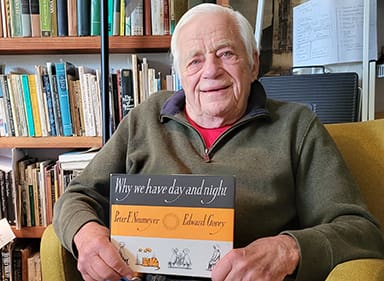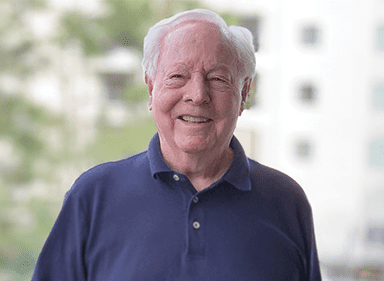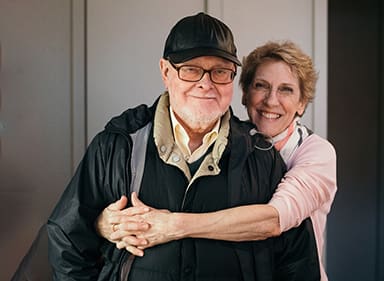June 21, 2023
Children’s Literature Author Peter Neumeyer Continues Writing His Own Life Story at Friends House
Across Front Porch’s communities, you’ll find many residents who were trailblazers during their careers — and who continue to nurture their passions in retirement. Peter Neumeyer, a resident of Friends House in Santa Rosa, is an expert on children’s literature. He founded one of the nation’s first children’s literature programs at San Diego State University.
While he has delighted children with his work for years, his first audience was his own children, for whom he wrote original stories in the 1960s. One day Peter and his editor were going over a college textbook Peter was writing. One of Peter’s home-made children’s books was lying on the table and caught the editor’s eye. And from then on, it’s children’s books that they produced.
At Friends House, Peter continues to be involved in literary activities. For eight years, he brought artists and writers to the community as a member of the Program Committee. Now, he’s the editor of the poetry column in Friends House’s weekly newsletter, contributing commentary on poems old and contemporary. He chooses poems that he says “speak to people who’ve been around a while.”
His selections resonate. Every few weeks or so, he gets feedback from his fellow residents. “Sometimes I get a little note from somebody thanking me, or sometimes somebody stops me and says, ‘I really liked that one,’” Peter said. And that means a great deal to him.
Before joining the Friends House community, Peter held academic appointments at Harvard, Stony Brook, and West Virginia universities. He also lectured in Sweden and Finland and conducted research at the International Youth Library in Munich. He has published more than 10 children’s books.

Occasionally, Peter speaks about children’s literature, discussing the history of the genre and the work of author-artists such as Beatrix Potter and Maurice Sendak. He brings up topics such as the role of the Industrial Revolution in launching children’s books as an “industry,” or the political agendas of books such as Maurice Sendak’s “We’re All in the Dumps with Jack and Guy.” Sometimes he talks about his own career, his collaboration with Edward Gorey, and his encounters with writers such as Tove Jansson (“Finn Family Moomintrolls,”) Astrid Lindgren (“Pippi Longstocking”) and Hans and Margaret Rey (“Curious George”).
Peter is particularly interested in examining the art of picture books, which he says have echoes in classical painting. “I love Peter Rabbit, and it deserves a very slow reading,” he added. “There’s an awful lot to see in it,” whether that’s humor, exquisite watercolor, or feminist commentary.”
Speaking to audiences about children’s literature is a way for Peter to engage in the intellectual stimulation that he craves. “I’m still in my head where I’ve been for the last 50 years with literary criticism,” he explained. Keeping a pulse on what’s happening in the literary world is key. “Children’s literature is thriving in the United States,” Peter said. “It’s attracted some of the best minds.”
At Friends House, he has found a community of people with wide-ranging interests and depth of knowledge. He’s grateful to have the chance to share his work with his neighbors. “I’ve seen the field grow into a very respectable and fascinating endeavor,” he said. “That I can’t quite leave it even now, should attest to its fascination.”
Reflecting on his career, Peter considers himself fortunate. He had the opportunity to travel the world to further his research and to explore questions of interest to him. He’s happy to continue his intellectual pursuits during his time at Friends House.


